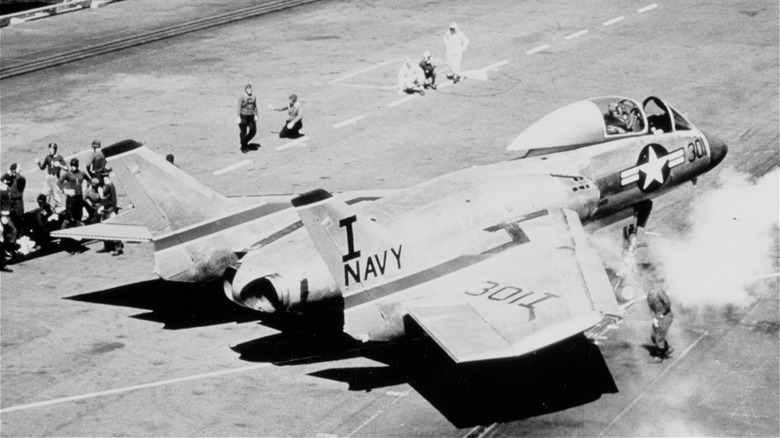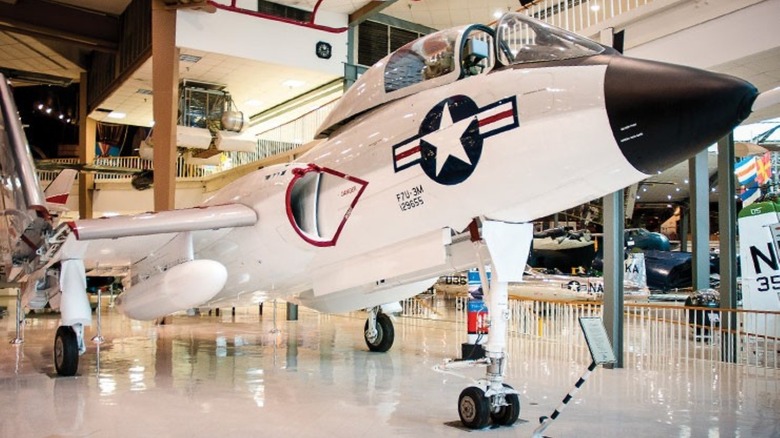Vought F7U: The Dangerous Fighter Jet That Navy Pilots Feared
For every plane design like the F-14 Tomcat or the P-51 Mustang that pilots adored flying, there are undoubtedly several planes that don't earn a good reputation. One of those planes was the Vought F7U Cutlass: its unconventional design didn't help much in the looks department, but the Cutlass really drew the ire of American naval aviators because it was outright dangerous to fly.
The Cutlass started out with a good — if unconventional — idea when it was first proposed in 1945. It had a swept wing design, which would later be used to great effect on a larger scale with jets like the B-47 Stratojet. It was also designed by Rex Beisel, the engineer responsible for planes like the F4U Corsair, an aircraft renowned for its decisive actions against the air power of the Imperial Japanese Navy in World War 2.
The actual airframe of the jet was where it started to veer into left field. For starters, it was a tailless design, meaning that it didn't have a vertical stabilizer, or the "tail" section of many conventional aircraft. Second, the front landing gear was abnormally tall and prone to breaking under stress — not ideal when landing on the deck of an aircraft carrier.
Not enough power
The powerplant of the Cutlass earned it the nicknamed "Gutless Cutlass," as its two Westinghouse turbojets were not enough to fly the plane safely. Despite the plane's strange design and underpowered engines, the Cutlass was picked to perform with the famed Blue Angels, the U.S. Navy's aircraft demonstration team.
The Cutlasses that flew with the Blue Angels encountered numerous mechanical failures in flight, and were generally harrowing to fly, according to the pilots behind the flight stick. Aircraft carrier captains even refused to have the jets on their ships, as was the case with the USS Hancock after a pilot died during an accident when the front landing gear snapped.
Pilots hated the plane, and even the improved F7U-3 wasn't much better, as well as being a mechanical nightmare to maintain. Despite all this, Oldsmobile decided to name a car after the plane; resulting in the Oldsmobile Cutlass, an icon of the muscle car world, according to Smithsonian Magazine. During the jet's less-than-illustrious service, several pilots died in a total of 78 accidents, and a quarter of all Cutlass airframes produced were lost to mechanical failures or crashes.
The Cutlass only served for four years in naval aviation service, from 1953 to 1957.

